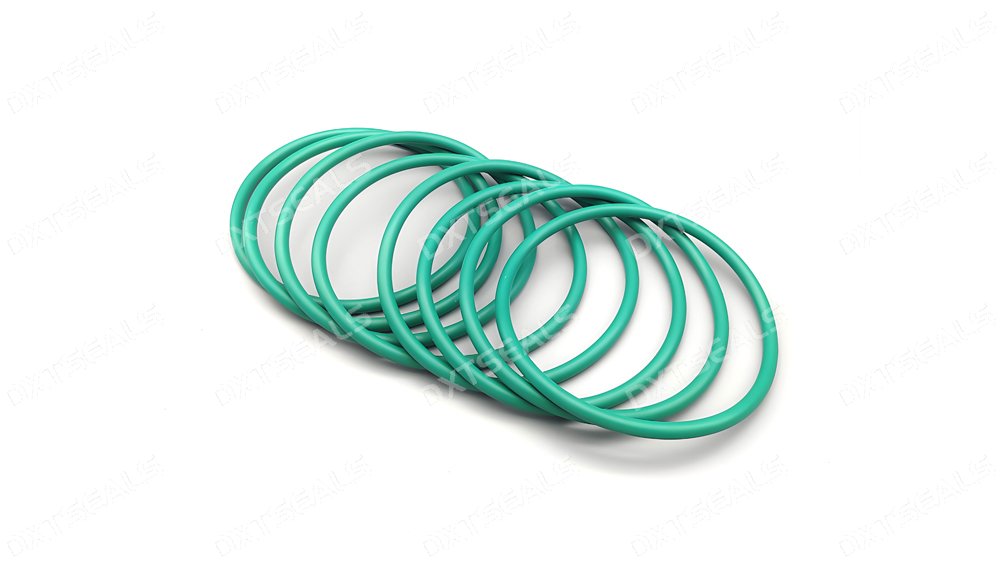
In high-temperature industrial environments, choosing the right rubber material for sealing applications is critical. Not all elastomers are created equal when it comes to heat resistance. From automotive to chemical processing, selecting a rubber that withstands extreme temperatures can prevent system failure and costly downtime.
In this article, DXTSEALS presents a performance ranking of commonly used rubber materials based on their temperature tolerance and overall suitability for high-heat applications.
🔥 Why Temperature Resistance Matters for Seals
Seals are often the first components to fail under extreme heat due to thermal degradation, hardening, or cracking. Rubber that loses its elasticity or sealing integrity under heat can cause:
-
Leakage in hydraulic/pneumatic systems
-
Breakdown of protective barriers
-
Equipment malfunction
-
Safety hazards
Therefore, choosing the correct heat-resistant elastomer ensures longer service life, reduced maintenance, and optimal system performance.
📊 High-Temperature Rubber Materials: Performance Ranking
| Material | Max Continuous Temperature | Short-Term Peak | Chemical Resistance | Cost Level | Typical Applications |
|---|---|---|---|---|---|
| FFKM (Perfluoroelastomer) | ~327°C (620°F) | ~343°C (650°F) | Excellent | Very High | Aerospace, semiconductor, chemical plants |
| VMQ (Silicone Rubber) | ~230°C (446°F) | ~250°C (482°F) | Good | High | Medical, food, electronics |
| FKM (Fluoroelastomer) | ~200–250°C (392–482°F) | ~260°C (500°F) | Excellent | Medium-High | Automotive, fuel systems, oil & gas |
| HNBR (Hydrogenated NBR) | ~150°C (302°F) | ~165°C (329°F) | Moderate to Good | Medium | Powertrain, oil sealing, compressors |
| EPDM | ~135°C (275°F) | ~150°C (302°F) | Excellent for water, steam | Low | HVAC, brake systems, steam sealing |
| NBR (Nitrile Rubber) | ~100–120°C (212–248°F) | ~130°C (266°F) | Good oil resistance | Low | General sealing, hydraulics, pneumatics |
🏆 Top 3 Heat-Resistant Rubber Materials
1. FFKM (Perfluoroelastomer)
-
Temperature Range: Up to 327°C continuous
-
Strengths: Unmatched chemical and thermal stability
-
Ideal For: Semiconductor, aerospace, aggressive chemical environments
-
Drawback: Very high cost
2. FKM (e.g., Viton®)
-
Temperature Range: 200–250°C continuous
-
Strengths: Excellent resistance to heat, oil, and fuel
-
Ideal For: Automotive engines, oil drilling, fluid power systems
-
Balance: Good mix of performance and cost
3. VMQ (Silicone Rubber)
-
Temperature Range: Up to 230°C
-
Strengths: Flexible at low and high temperatures, food-safe
-
Ideal For: Medical, kitchen appliances, electronics
-
Limitation: Poor resistance to fuels and abrasion
🛠 How to Choose the Right Rubber Material?
When selecting a high-temperature rubber for your sealing application, consider:
-
Working temperature range (continuous and peak)
-
Type of media (oil, steam, chemicals, fuels)
-
Mechanical stress (compression, dynamic movement)
-
Regulatory needs (FDA, ISO, RoHS compliance)
-
Cost-performance ratio
👉 For example:
-
For oil resistance + high heat, go with FKM.
-
For chemical + heat + cleanroom, use FFKM.
-
For steam + water sealing, EPDM is a cost-effective choice.
-
For non-oil high heat needs in electronics, use VMQ.
🔚 Conclusion
Choosing the right high-temperature rubber material can greatly improve the performance and lifespan of sealing components. FFKM is the top performer, but for most industrial uses, FKM offers the best cost-performance balance. Meanwhile, VMQ and EPDM also play important roles depending on the specific working environment.
At DXTSEALS, we provide precision sealing solutions using a wide range of materials tailored to your temperature and chemical exposure needs. Contact us to find the ideal rubber compound for your project.
📩 Need help selecting a heat-resistant sealing material? Contact DXTSEALS today.
